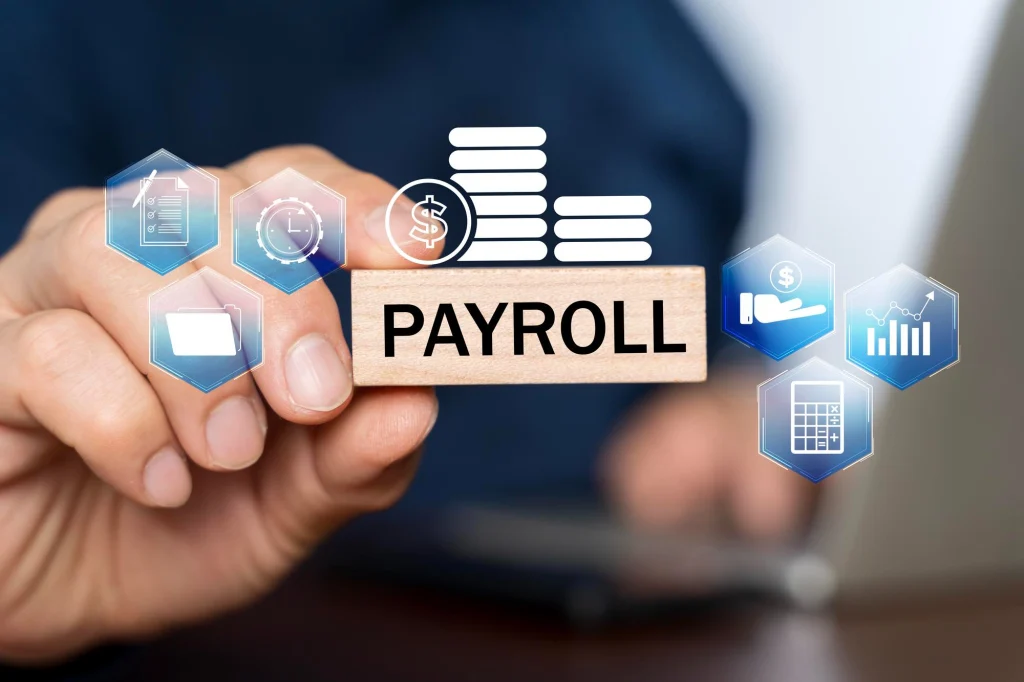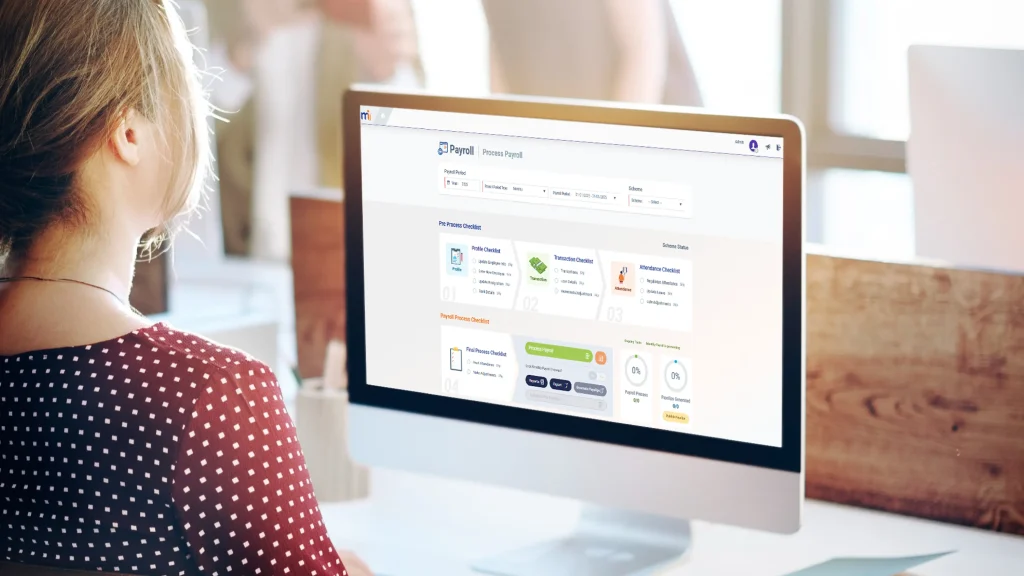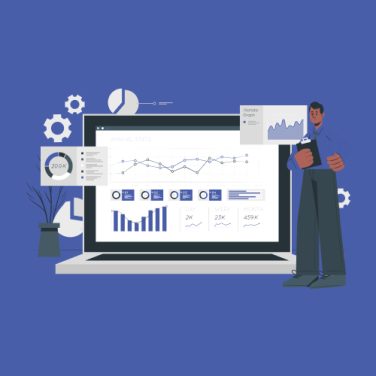In today’s fast-paced business environment, payroll automation is a transformative force for any business looking to enhance operational efficiencies and reduce errors in payroll processes.
Digital HR solutions simplify the complexities of payroll management by utilising software platforms that offer global payroll management, compliance, and advanced analytics.
With these capabilities, businesses can easily manage payroll functions, ensuring timely and accurate compensation while minimising human error.
Enhancing compliance and accuracy
Automating payroll systems offers more than just convenience; it delivers substantial benefits in accuracy and compliance – two crucial components in efficient payroll management.
As regulations vary across regions, software integration with compliance checks ensures businesses adhere to these diverse regulatory environments seamlessly. This not only aids in staying compliant but also reduces the risk of penalties associated with non-compliance.
MiHCM offers robust payroll management solutions designed to ensure that calculations are error-free and align with the latest labour regulations.
Some key benefits of automating payroll include:
- Reduced errors: Automation minimises the likelihood of errors associated with manual entry, ensuring higher data accuracy and consistent application across payroll calculations.
- Efficient resource utilisation: Automating routine processes allows HR departments to focus on strategic initiatives, enhancing productivity and employee satisfaction.
- Enhanced compliance: Automated systems stay updated with tax regulations and labor laws, facilitating easier compliance with statutory requirements and reducing the potential for legal liabilities.
With MiHCM solutions, businesses can enjoy streamlined HR operations, smooth assessments, and fast, accurate payroll processing.
Managing the transition

In an increasingly digital-savvy world, leveraging technology for payroll management is critical for business success. The transition not only leads to significant time savings but also optimises resource allocation, fostering a more harmonious workplace environment.
Implementing a payroll automation system can seem daunting but breaking it down into manageable steps can ease the transition from manual to automated systems.
Here’s how you can automate payroll efficiently and effectively.
Identify your business needs
- The first step in payroll automation is understanding your specific needs.
- Assess your current payroll processes to identify pain points such as repetitive manual tasks or frequent errors.
- Evaluate which automation features are essential for your business.
- Consider functionalities such as time tracking, report generation, and compliance management.
Select the right payroll software
- Once you have a clear understanding of what your business requires, it’s time to select the appropriate software.
- Research solutions like MiHCM Lite, which is designed for small businesses, ensuring seamless support from payroll processing to compliance, or MiHCM Enterprise, designed for medium to large businesses.
Plan and prepare for transition
- Create a detailed implementation plan that includes timeline, budget, and resources.
- Conduct a risk assessment to foresee any potential challenges and design strategies to overcome them.
- Assign roles and responsibilities to team members to ensure a smooth transition.
Data migration and system setup

- Next, migrate existing payroll data into the new system.
- Ensure data accuracy to avoid initial setup errors.
- Configure the system according to your organisational requirements, such as setting up payroll calendars, tax configurations, and employee categories.
Training and testing
- Provide comprehensive training to your HR and payroll teams on using the new software.
- Conduct testing sessions to ensure the system operates smoothly and correctly, verifying that payroll calculations are accurate, and reports are generated properly.
Roll-out and monitor
- After successful testing, proceed with the full-scale rollout.
- During the initial months of operation, closely monitor the system to detect any issues.
- Continuous monitoring helps in maintaining accuracy and addressing any challenges promptly.
By following these steps, businesses can transition to payroll automation seamlessly, achieving improved efficiency, reduced errors, and enhanced regulatory compliance.
Addressing common pitfalls

Transitioning to a paperless payroll system presents challenges that businesses need to navigate to unlock the full benefits of automation.
Common pitfalls include employee resistance, data migration hurdles, and integration issues with existing systems.
Here’s how to tackle these challenges effectively:
- Employee resistance to change: Employees may be wary of new technologies that alter their payroll interactions. Educating staff on the benefits, such as increased efficiency and reduced errors, can ease the transition and boost acceptance. Incorporating tools like MiHCM can make this process smoother by offering intuitive user interfaces.
- Data migration issues: Migrating data from manual to digital systems can be a complex task prone to errors if not handled meticulously. Ensure thorough checks and utilise specialised services to manage migration. MiHCM’s robust software solutions provide comprehensive support for accurate data transfers.
- Technical integration problems: Compatibility with existing HR and payroll systems is crucial. Invest in solutions like MiHCM that offer seamless integration capabilities, allowing businesses to maintain workflow continuity without disruptions.
Transformative improvements
Implementing paperless payroll systems offered by MiHCM can lead to transformative improvements for businesses:
- Global payroll management: MiHCM’s global payroll capabilities enable handling employee payrolls across multiple countries, ensuring compliance with international labour laws and regulations.
- Streamlined HR operations: The automation of payroll processes significantly reduces administrative burdens, cutting the time spent on payroll processing.
- Enhanced compliance and reporting: MiHCM Enterprise provides accurate and timely compliance checks, ensuring all legal and taxation obligations are met efficiently.
- Increased productivity: With fewer manual tasks, HR teams can focus on strategic initiatives and engage more effectively with employees.
On the verge of a revolution
The landscape of payroll automation is on the verge of a revolution, driven by the integration of advanced technologies such as AI and machine learning.
These technologies are set to transform payroll processes by enabling systems to learn from data patterns and adapt to unique business needs without manual input. This shift not only streamlines operations but also enhances the predictive accuracy of payroll systems.
Looking ahead, businesses can expect more robust payroll solutions that are not just automated but intelligent. These systems will offer greater insights through data analytics, facilitating informed decision-making.
For businesses eager to harness the potential of modern payroll automation, MiHCM stands as a trailblazer, offering a comprehensive suite that equips companies with the tools needed to flourish in the future.



